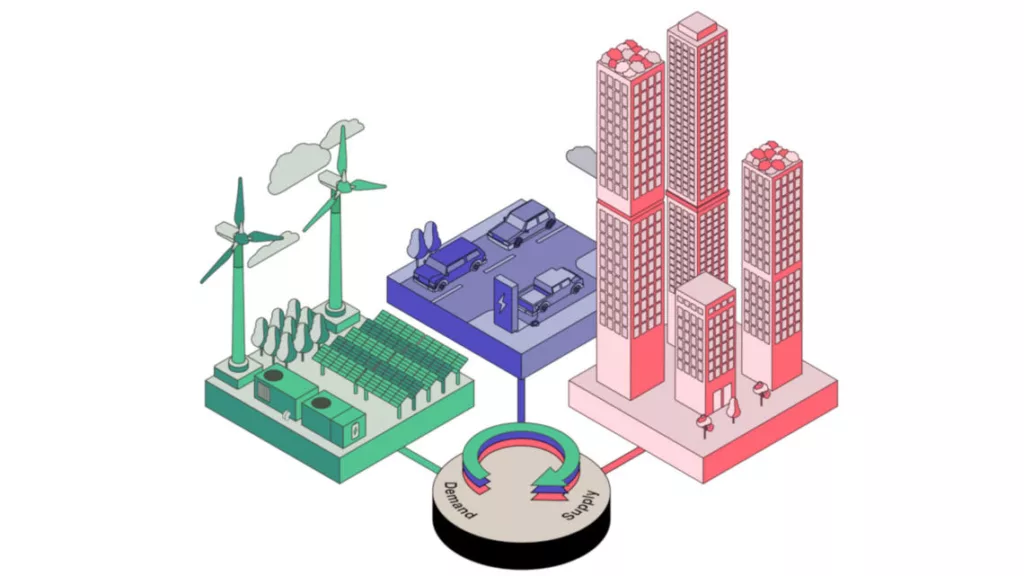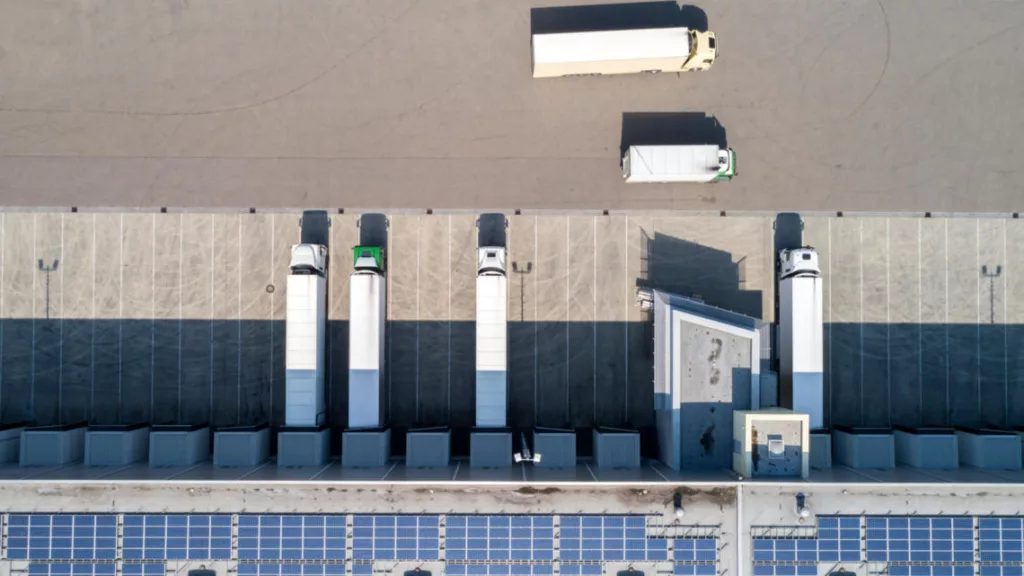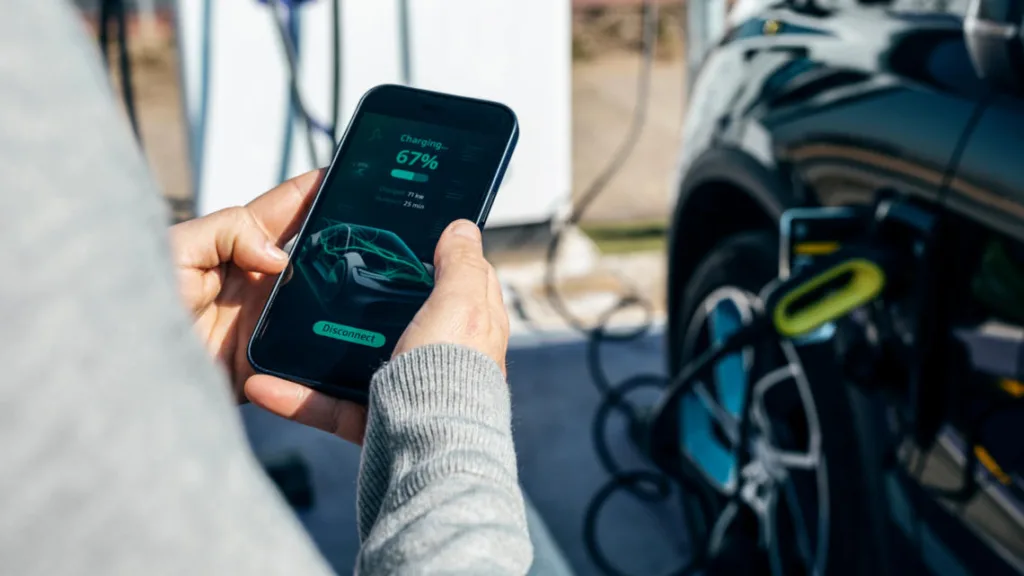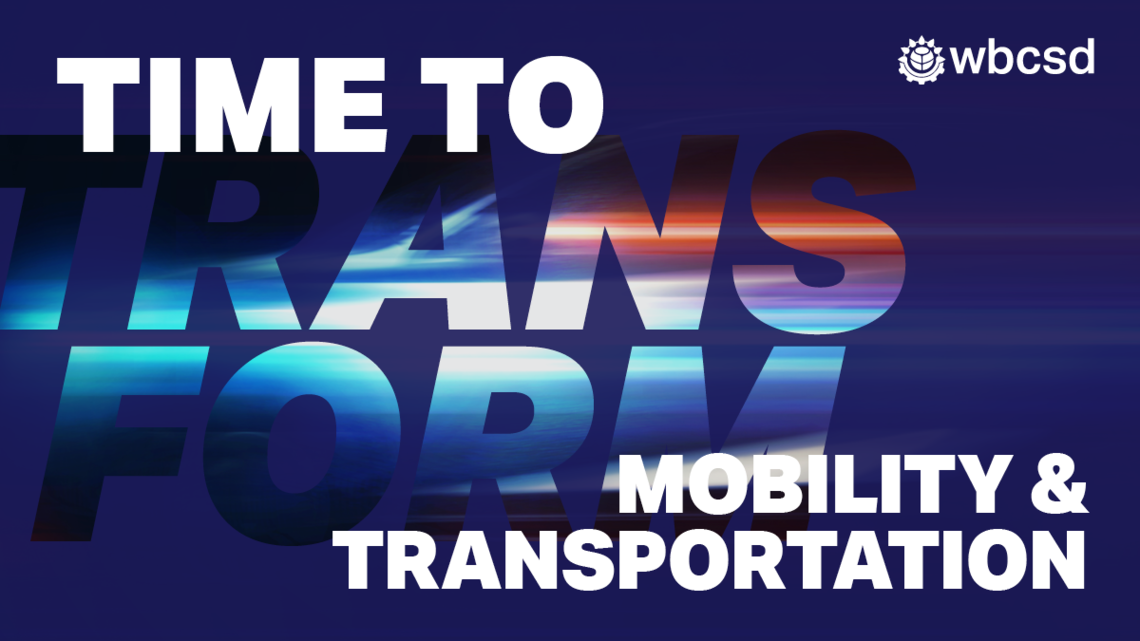Authors
Wei Dong Zhou
An interview with Thomas Deloison, Director Mobility at the World Business Council for Sustainable Development (WBCSD), by Wei Dong Zhou, Director WBCSD China
Earlier this year WBCSD launched Vision 2050: Time to Transform – a framework for business action in line with the urgency of the challenges that we face as global societies. It offers companies comprehensive and ambitious guidance on how they can lead the transformations needed to bring about a world in which 9+ billion people can live well, within planetary boundaries, by 2050.
At the heart of Vision 2050 are nine transformation pathways covering the areas of business activity that are essential to society. As part of our series of deep dives into all nine pathways, I’m excited to take you through the Transportation & Mobility pathway, looking at the societal needs that we need to deliver on, the transitions that are required, and the actions that business can take today.
Transportation involves the movement of people and goods across land, water and air, while mobility provides people with safe access to the people, places, goods and services that they need to live a healthy, happy and fulfilled life. This vast systems of transportation and mobility includes not just vehicles, but the services and infrastructure that support the full range of transport modalities, for people and goods. Our 2050 vision for Transportation & Mobility is for “safe, accessible, clean and efficient transportation of people and goods.” The vision further explores how the societal needs from Transportation & Mobility will be met in 2050, requiring business to ensure that:
- mobility enables opportunity for all.
- health & safety are paramount.
- transportation is clean and efficient.
- transportation systems respect people and communities.
Last week I spoke to WBCSD’s Director of Mobility, Thomas Deloison, to get a deeper understanding of this pathway and what business can do to drive action towards its vision.
Thomas, can you tell me about the importance of transportation and mobility systems to society, and the progress already made towards the vision laid out in the pathway.
Transportation and mobility systems are essential to societies. They connect people and places and they are enablers of information exchange, essential societal services and economic activity. Transportation has been at the heart of civilization and has contributed to the 20th-century economic growth, but the fast expansion of fossil fuel-based energy in transport, along with rapid urbanization, have created externalities that are no longer sustainable.
A deep transformation of transport and mobility systems is already happening. Trends such as urbanization, changing customer expectations and technology innovation are pushing industries, urban areas and governments to accelerate action in support of moves toward a decarbonized, regenerative and inclusive economy. Electrification of vehicles and digitalization are taking hold in passenger and goods transport systems, allowing governments, regions and municipalities to reduce emissions and congestion but also provide better access to transport.
What are the most important areas that business needs to act on now to accelerate and scale transportation and mobility systems change?
Companies from the transport sector must embrace technologies, business models and standards that will reduce their greenhouse gas (GHG) emissions and enable large-scale adoption of zero-emission vehicles and digitalization. These technology changes represent a deep ecosystem transformation across vehicle modes and geographies, calling for cross-value chain and cross-sectorial collaboration to create sustainable and equitable mobility and transport systems. To scale up and accelerate this transformation in line with the goals of the Paris Agreement, we need all stakeholders to work together to implement solutions that can support profound behavior change in highly fragmented and contextual mobility landscapes.
So, what is WBCSD doing to help business drive these critical systems transformations?
Vision 2050’s Transportation & Mobility pathway can help businesses to understand how and where they can drive the needed transformations. It lays out a comprehensive series of transitions that we consider critical to the achievement of our vision for Transportation & Mobility: innovations in battery, low-carbon fuel and efficiency to decarbonize transportation along with infrastructure development and planning will pave the way for sustainable, resilient and inclusive mobility. More diverse mobility solutions are required to shift mobility habits while increasing safety, convenience and efficiency. Businesses need to unlock circular opportunities and scale these across the transportation and mobility sector, alongside selective deployment of autonomous vehicles that enhance efficiency, safety and access. At the same time, investment in data sharing is needed to improve efficiency in urban mobility systems. Finally, multi-stakeholder efforts will be needed to ensure that the transition to a sustainable mobility system leaves no one behind.
As well as the comprehensive set of transitions laid out above, the pathway proposes 10 prioritized action areas for business to focus on over the next decade to accelerate the pace and scale of change. These action areas span innovative products, services, technologies and business models, as well as ways that companies can help create the right enabling conditions for change. They are not exhaustive, but cover the most urgent and important priorities in the crucial decade ahead. Vision 2050’s 10 business action areas for the Transportation & Mobility pathway are:
- Develop and adopt ambitious sustainable corporate mobility policies that foster the rapid electrification of corporate fleets, the highest possible vehicle safety standards, vehicle sharing, active mobility and teleworking.
- Continue to invest in the development of innovative electric charging and energy storage technologies that can be deployed across mobility platforms, and help to bring passenger battery electric vehicles to market at all price points and segments.
- Collaborate with governments, cities, industry peers and across sectors on the deployment of connected and interoperable charging infrastructure.
- Scale the use of low carbon fuels for long range and heavy-duty transportation.
- Work with local and national organizations to agree and operationalize responsible data-sharing initiatives related to transportation that create public and private value.
- Engage in dialogues with policymakers, operators, and labor unions to explore potential impacts on employment associated with the roll-out of mobility as a service models, automated and electric vehicles, and innovations in production-line technology. Ensure that workers are engaged and empowered as new technologies emerge.
- Ensure human rights are respected across transportation and mobility value chains, developing and improving internal policies and systems for human rights due diligence as set out by the UN Guiding Principles on Business and Human Rights.
- Develop, test, and scale economically viable and inclusive business models for mobility-as-a-service, connected urban logistics, and vehicle-to-city connectivity.
- Develop, test, and scale opportunities surrounding circularity in the automotive industry and across the whole transport and mobility system.
- Develop and adopt guidelines and standards for the roll-out of sustainable transport infrastructure that contributes to the regeneration of natural and social ecosystems.
These actions are all aligned with the achievement of the Sustainable Development Goals, translating SDG ambitions and targets into clearly actionable areas of business activity.
Together with our members, WBCSD is implementing these 10 action areas within Transforming Urban Mobility: the program focuses on three key topics, all interconnected and crucial for achieving sustainable and resilient transportation systems: decarbonization, digitalization and behavior change. The transformation of mobility and transportation systems is a sizeable opportunity for new technologies and business models to harness purpose-driven ecosystems that can create true value across the economic, social and environmental domain. These new ecosystems will re-define our way of life and re-shape cities and transport networks to serve the forecasted doubling in transport demand in a sustainable and inclusive way.
Thanks, Thomas. I will add some reflections on what’s happening in China.
In China, we see these shifts happening rapidly and at scale. In just a decade, China’s New Energy Vehicle (NEV) population grew by about 250-fold to a cumulative 5 million vehicles sold by the end of 2020 – with a 47 percent market share globally in the first five months of 2021. Chinese electric car makers BYD, BAIC, Geely, and SAIC have now sold more than 2 million electric cars globally, and BYD was ranked as the world’s second largest electric vehicle manufacturer in 2019, after Tesla. In 2020, 14 of the world’s top 25 electric vehicle cities were in China.
The Chinese government recently launched a NEV industry development plan 2021-2035 to stimulate high-quality, sustainable development in the industry with a target of around a 20 percent share for NEVs of new vehicle sales by 2025. The China Academy of Transportation Science predicts that the share of electric vehicles could increase to over 80 percent by 2050. Electric transport will likely consume more than 2 trillion kilowatt-hours of electricity in China by 2060, equivalent to 268 million tons of standard coal and accounting for half the total energy consumption of the transportation sector. In the short-term, accelerating the electrification of road transport is key to realizing the low-carbon and zero-carbon transformation of the transportation sector.
During the COVID-19 pandemic, a Mobility as a Service (MaaS) smart mobility platform was initiated by Alibaba and Baidu in Beijing and Guangzhou. The Beijing Municipal Transportation Commission along with Alibaba’s subsidiary, Gaode Map, launched a MaaS mobile app in Beijing, branded as the ‘Beijing Green Transportation Integrated Service Platform’ – the first of its kind and serving over 10 million users in the pilot phase. Baidu also launched its autonomous taxi service in Beijing, where users can hail a robotaxi without a safety driver behind the steering wheel. Other champions of mobility in China include the ride hailing service Didi Chuxing and the food delivery service Meituan.
By the end of 2020, China’s operating railways totalled 146,000 kilometers and in the country’s 13th Five-Year Plan period (2016-2020), China’s railway freight volume increased by 227 million tons year-on-year, equivalent to reducing CO2 emissions by about 20 million tons compared with the same volume of highway transportation. The annual consumption of national railway fuel oil has at the same time dropped 60 percent since its peak in 1985, equivalent to a reduction of over 12 million tons of CO2 emissions per year.
China has committed to reach a peak in CO2 by 2030, and achieve carbon neutrality by 2060. Transportation and mobility are crucial parts of this, and the China Automotive Industry Blue Book recently set out goals to achieve carbon peak in 2028, near zero emissions in 2050, and carbon neutrality in 2060. In October, the country will host the Second United Nations Sustainable Transport Conference in Beijing. This will be a great opportunity to connect the WBCSD mobility network and members on decarbonization, digitalization and data in urban mobility.
VISION 2050 INSIGHT SERIES
This article is part of an ongoing insight series into WBCSD’s Vision 2050: Time to Transform.
Introduction: Julian Hill-Landolt, Director, Vision 2050, introduces the Vision 2050: Time to Transform insight series and provides an overview of the topics that will be covered.
Living Well: Filippo Veglio, Managing Director, People & Society, takes a deeper look at what it means to “live well” – a world in which everyone’s dignity and rights are respected, basic needs are met, and equal opportunities are available for all.
Living within Planetary Boundaries: Diane Holdorf, Managing Director of the Food & Nature Program, and Claire O’Neill, Managing Director of the Climate & Energy Program, take a deeper look at what it means to “live within planetary boundaries”.
We can provide healthy diets for all: Diane Holdorf, Managing Director of the Food & Nature Program, explores Vision 2050’s Food pathway.
We can connect people: Constant van Aerschot, Director WBCSD Asia Pacific, talks with Fujitsu’s Mel Melis about Vision 2050’s Connectivity pathway.
We can keep the water flowing: Joe Phelan, Director WBCSD India, provides an overview of our Water & Sanitation pathway and reflects on its importance in India.
Next Up: Federico Merlo, Managing Director, Member Relations and Circular Economy, will offer a deeper look into Vision 2050’s Products & Materials pathway.
WBCSD news articles and insights may be republished in accordance with the Creative Commons Attribution-NonCommercial-NoDerivatives 4.0 International Public License, and in accordance with our Privacy Policy. All Content must be featured with due credits.
Related
Content

The fast lane to low carbon with integrated approaches
21 July, 2023

Companies unite to advance truck electrification in India and signal demand for 7,700 electric freight vehicles by 2030
19 July, 2023

Unleashing the power of data for electric vehicles and charging infrastructure
14 July, 2023
